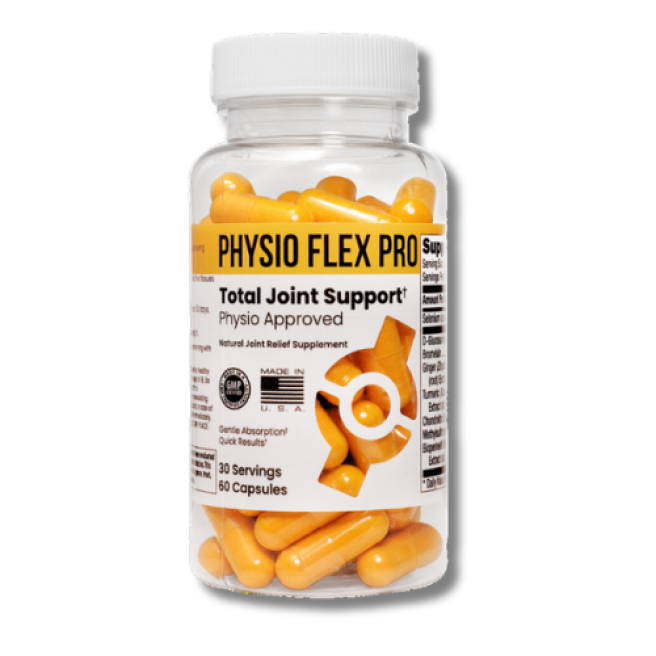Mobility naturally declines with age, meaning joint aches can sneak up on you without warning. It’s inevitable, but there are a few things you can do to ward off the worst. Mobility, that is, your ability to move with ease, is essential for maintaining your independence and sense of well-being. Physical strength, balance and even walking patterns can begin to falter over time as mobility declines. In fact, according to research, about one-third of adults over 65 will fall at least once a year.
Alongside diet and supplements that help maintain your joint health, exercise is key for keeping your mobility in tip top shape. Think of it as a form of medicine to keep those creaks at bay, helping you move without restriction.
Those who have tried yoga or Pilates will know that they're effective for improving mobility - yoga, due to its strength, flexibility and balance-enhancing qualities and Pilates, for its core strengthening benefits. Can one enhance mobility more than the other? We investigate below.
How Does Yoga Improve Mobility?
Yoga is an ancient Indian practice encompassing flexibility, strength and meditation. According to Harshitha Gopal, Yoga Instructor at MyYogaTeacher and certified Hatha and Yin Yoga instructor, yoga’s valuable role in improving mobility stems from its emphasis on muscle flexibility—which helps to improve flexibility within the joints while increasing your range of motion.
“As your muscle flexibility enhances, the supporting muscles in each joint can contribute to a fuller range of motion overall”. In fact, three studies in a systematic review on the effect of yoga on mobility found it to be significantly worthwhile compared to the control group.
Gopal recommends practicing yoga as much as you can, or at least three days a week, also blending it with other forms of exercise. “You can split the focus, meaning strength exercises at one session, flexibility work on the second and dedicating the third day to mobility movements.”
Yoga Mobility Exercises

Try the following yoga exercises, suggested by Gopal, to boost mobility and ignite your energy.
What you need: A non-slip yoga mat
Perform each exercise for one to two minutes for three to four rounds
Cat-Cow Pose
To improve mobility and flexibility of the Spine
- Start on all fours with your shoulders aligned to wrists and your knees to hips. Maintain a neutral spine and engage your core by scooping your belly button toward the spine.
- On an inhale, arch your back to create a ‘C shape’ in your spine, bringing chin to chest and pointing your tailbone toward the floor.
- As you exhale, reverse the motion dropping your belly down to the floor and raising your head to look upward.
- Continue moving through this motion slowly and with control.
Pigeon Pose
Opens the hips to mobilize and strengthen the surrounding joints
- On all fours, bend your left knee in front of your right knee, bringing your left hip down toward the floor (you should already feel a stretch).
- With your left foot hovering ahead of your right hip joint, push your right leg back as far as it can go, keeping the leg straight and toes pointing down.
- Slowly walk your hands forward as you lean your upper body over your bent knee, where you can rest your head and body on the mat with arms outstretched in front. Stay here for a few deep breaths.
- Walk your hands back to the starting position and alternate to the other leg.
Warrior 1 Pose and Warrior 2 Pose
Encourage movement at your knees, ankles and improves mobility at the hips
- For Warrior 1, start in a standing position at the end of your mat and take a big step forward on your right leg, planting your right foot down on the mat and keeping your toes pointing straight ahead.
- Bend your right knee into a lunge, making sure your left leg is straight behind you with your left foot turned out at a 45-degree angle.
- Stretch your arms up tall above your head keeping your shoulders down, and tilt your chin up.
- Transition into Warrior 2 by turning your left foot to a 90-degree angle, followed by both arms extending out long at the sides.
- Keep the right knee bent in a lunge and turn your head in this direction, checking that your knee is tracking your toes.
- Alternate between sides.
How Does Pilates Improve Mobility?
Pilates improves mobility as the exercises guide you through a full range of motion using controlled, deliberate movements, says Laura Endres, a Physical Mind Institute Certified Mat Pilates Instructor and AFAA certified personal trainer. “The goal with Pilates isn’t to be as mobile or flexible as possible, but instead to build the proper strength, stability and range of motion in your joints that allow everyday activities to become easier,” says Endres.
Many mobility issues are the result of not working your muscles in the correct way, and therefore you rely on momentum or bad form to carry you through, explains Endres. “Performing movements without enlisting the correct muscles increases your risk of injury, especially when you’re performing exercises you’re not ready for.”
She recommends Pilates as a way to connect with your body and learn how to lengthen and flex muscles with control, stabilize certain body parts while moving others and apply focus and breathing to each movement. In other words, using your body as it was intended.
Exercises
Pilates is something that can be performed often, either as a stand-alone workout, in which case Endres advises 3 times a week, or incorporating it more frequently into other workouts. Follow Endres’ suggestions below to move your mobility up a notch.
What you need: A non-slip yoga mat
Try each exercise one minute for three rounds
Pilates Standing Roll-Down
For mobility of your spine
- Standing tall, take an inhale and then hug your navel in toward your spine as you begin to bend forward with a long exhale.
- Let your arms reach toward the floor, and keep length in your spine. Think of it as bending forward over a ball so that rather than a hinge at the hips, it’s an articulated arc forward with length through your spine.
- Once you’re rolled down as far as you can naturally, hold there and again, hug your abdominals in, reaching the middle of your back toward the ceiling. You will feel a stretch through the spine and sometimes in your hamstrings.
- From there, reverse the move on an exhale and articulate back to standing.
I like Leg Circles
Bringing movement to the hips
-
Lie face up with your right leg extended on the floor and your left leg extended straight up toward the ceiling.
-
Brace through the core, keeping your right leg steady, and on an inhale, draw a large circle with the left leg, by bringing it across your body, down, out to the side and back to the starting position on the exhale.
-
Pause before beginning the next rep.
- Repeat on the other leg.
Mermaid Side Bends
To make bending and twisting motions more fluid
- Sit tall on the floor with both legs bent and tucked at your left. Extend your left arm overhead, inhale, and on the exhale, reach and bend up and over to the right, expanding through your torso and arm. You can support yourself with your right hand on the floor.
- In the extended position, lift the left side of your rib cage toward the ceiling for a deeper reach.
- Inhale, and return to the starting position on another exhale.
- Repeat on the other side.
The Verdict
Both yoga and Pilates have their place in a well-rounded workout routine—yoga more so for flexibility and meditative purposes, and Pilates for core strength and connecting the dots for proper movement patterns. And some of their principles are intertwined, especially with deep breathing and mental focus. The best outcome for your joint mobility may be a blend of training styles that strengthen, lengthen and move your muscles. With yoga or Pilates, you can’t go wrong.






